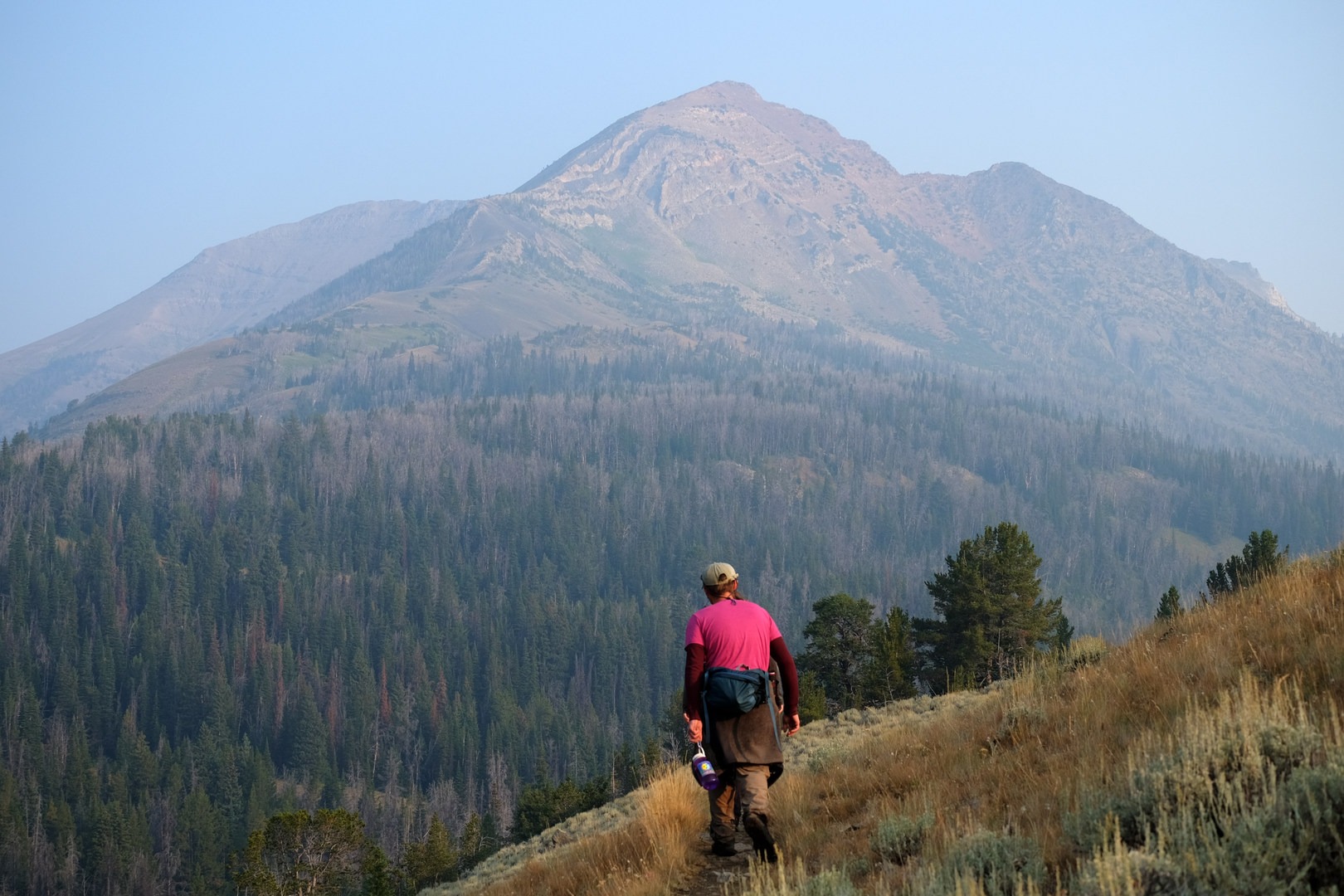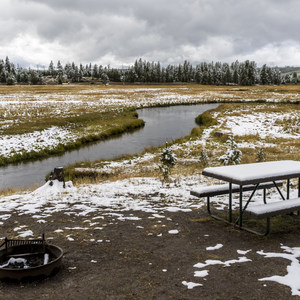You are here
As the tallest mountain in the Gallatin Range, Electric Peak is unmistakable on the northern Yellowstone horizon. The hike to its summit is long and challenging, but it offers the best vistas around. Its steep rocky slopes are predominately Cretaceous-age sedimentary rock with bits of Eocene-age igneous intrusions — not surprising given Yellowstone’s volcanic history.
The first few miles run through mostly flat and open grassland on the Glen Creek Trail. There is a big junction about 2 miles in, with trails heading west (to Fawn Pass) and east (to Snow Pass). Continue straight and squeeze between two hillsides close to Glen Creek. The trail has an easy uphill grade from here to your next junction with the Sepulcher Mountain Trail.
From the Sepulcher Mountain junction, the trail briefly winds through patchy forest. You unknowingly cross into the boundary of one of Yellowstone’s bear management areas before the Cache Lake junction. If you will be hiking early or later in the day, you'll have better chances of seeing bears! As the lodgepole forest around you thickens, you know you are approaching the Cache Lake junction. It is definitely worth the short trip to Cache Lake if you have the energy and time. Electric Peak provides a spectacular backdrop to Cache Lake, which gets less traffic than some of Yellowstone’s other lake hikes.
It’s just another 0.9 miles from the Cache Lake to Electric Peak junction. Just past the Electric Peak junction on the Sportsman Lake Trail are two backcountry sites (IG3, IG4) alongside the Upper Gardner River. You will have to backtrack to get to the peak trail, but the additional mileage is minor in comparison to doing the whole trek in one day.
From the Electric Peak junction, follow the trail through a patchy forested ridge above the upper Gardner River for about a mile to an overlook area of the river. From here, the hike up to Electric Peak is relentlessly steep, gaining over 2,700 feet from the river overlook. The landscape becomes increasingly rocky as you ascend the ridgeline. Near the peak, it is more climbing than hiking. The trail essentially disintegrates into the rocky, loose slopes for the last half mile. Other hikers before you have built cairns to help guide you up a reliable route on the western face of the mountain. The route is still steep and requires some technical skill. No ropes or equipment are needed to summit Electric Peak, but wearing gloves may prove beneficial in case you accidently slip and catch one of many knife-edged rocks.
On a clear day, enjoy grand views from Electric Peak. Sepulcher Mountain is just southeast with the small gateway town of Gardiner tucked behind it. The view to the north is filled with peaks of the Gallatin and Absaroka Ranges. The southern view boasts more of the Gallatin Range and even the Tetons, way in the distance. Be sure to look for the sign-in box surrounded by a mound of rocks at the top.
Electric Peak received its name in 1873 from three members of the 1871 Hayden expedition into Yellowstone who succeeded in summiting the mountain in late July but were caught in an “electrical cloud” en route. Upon seeing his fellow expedition member, Henry Gannett, the geologist Albert Peale wrote, “As he neared us we observed that his hair was standing on end, as though he were on an electrical stool, and we could hear a series of snapping sounds, as though he were receiving the charges of a number of electrical frictional machines.”











Comments
Sign In and share them.